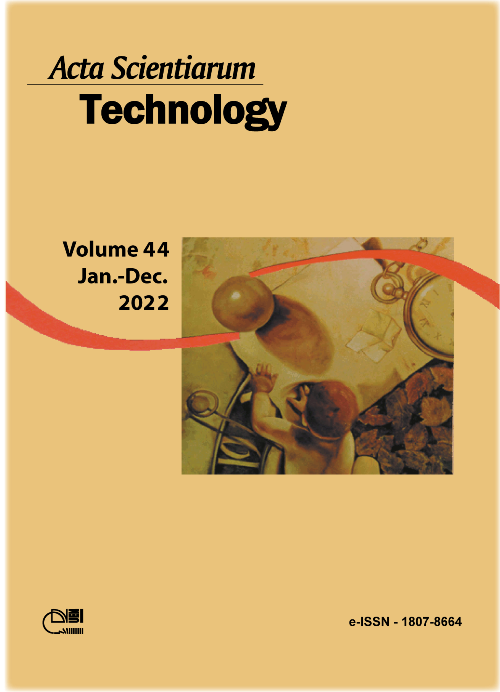Measuring the effectiveness of extrapolation techniques associated with the multigrid method applied to the Navier-Stokes equations
DOI:
https://doi.org/10.4025/actascitechnol.v44i1.57398Palavras-chave:
Finite volume method; projection method; convergence acceleration; topological Epsilon.Resumo
In this work, we applied different extrapolation techniques in association with the multigrid method to discover which one is the most effective in reducing the iteration error and the processing time (CPU time), as well as in improving the convergence factors. The mathematical model studied refers to the two-dimensional laminar flow of an isothermal time-dependent incompressible fluid modeled by the Navier-Stokes equations, with , solved iteratively with the projection method and the Finite Volume Method. The extrapolation methods used were: Aitken, Empiric, Mitin, scalar Epsilon, scalar Rho, topological Epsilon, and topological Rho. A two-step application was performed: first, extrapolators methods were applied individually after the use of the multigrid method. Then, the best-performing extrapolation techniques were used in the second step, where they were applied between the cycles of the multigrid method. The methods that presented the best convergence properties in the first stage were topological and scalar Epsilon. In the second stage, both methods maintained their performance, however, the topological Epsilon method presented more significant convergence rates than the scalar Epsilon. The other parameters analyzed were: the storage memory peak, the dimensionless norm of the residual based on the initial estimate, and the error norms of iteration. Thus, it was possible to state which extrapolation technique performed best and to compare it with the multigrid method with no extrapolation, which in this study was the topological Epsilon method.
Downloads
Downloads
Publicado
Como Citar
Edição
Seção
Licença
DECLARAÇíO DE ORIGINALIDADE E DIREITOS AUTORAIS
Declaro que o presente artigo é original, não tendo sido submetido í publicação em qualquer outro periódico nacional ou internacional, quer seja em parte ou em sua totalidade.
Os direitos autorais pertencem exclusivamente aos autores. Os direitos de licenciamento utilizados pelo periódico é a licença Creative Commons Attribution 4.0 (CC BY 4.0): são permitidos o compartilhamento (cópia e distribuição do material em qualqer meio ou formato) e adaptação (remix, transformação e criação de material a partir do conteúdo assim licenciado para quaisquer fins, inclusive comerciais.
Recomenda-se a leitura desse link para maiores informações sobre o tema: fornecimento de créditos e referências de forma correta, entre outros detalhes cruciais para uso adequado do material licenciado.















